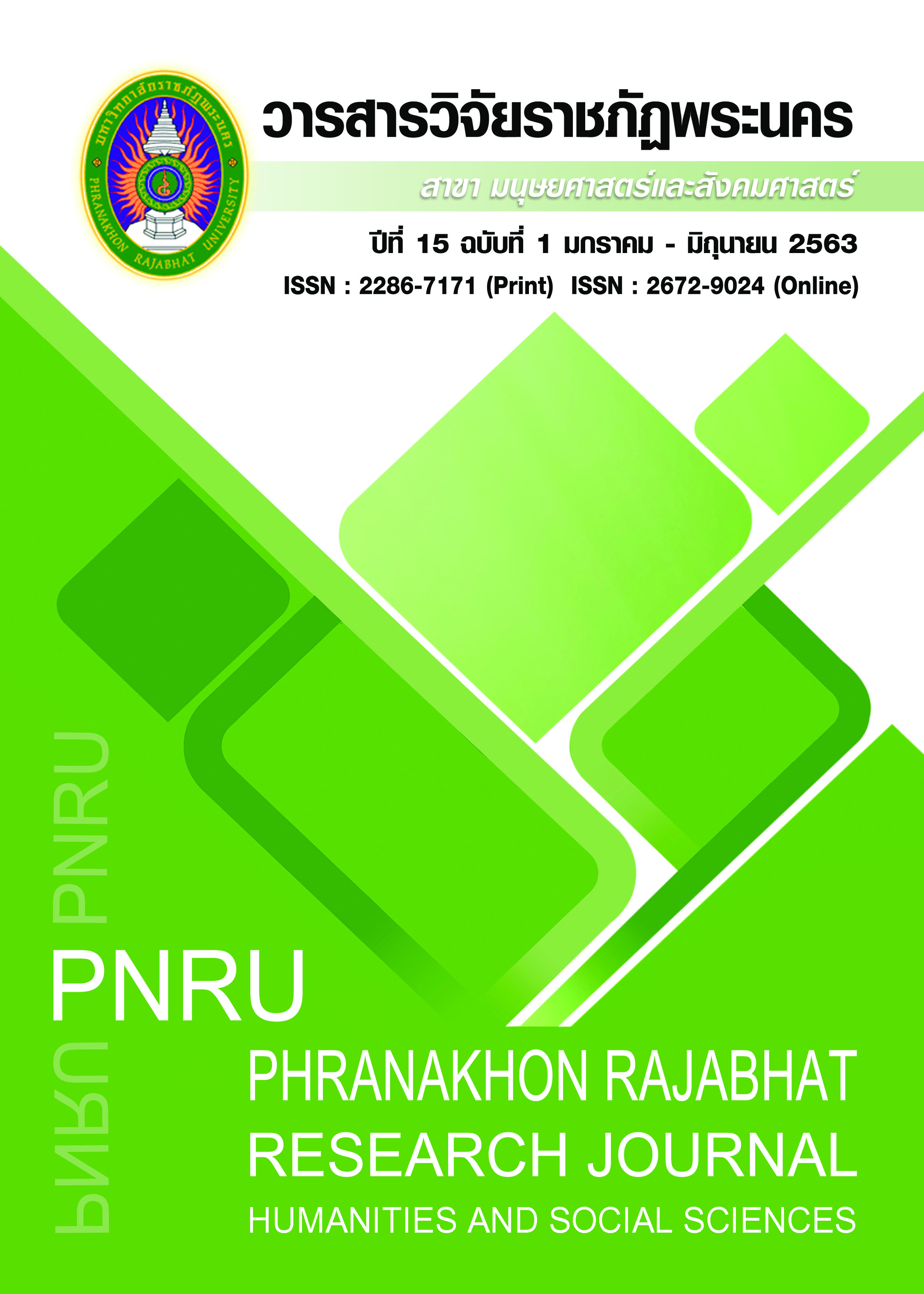ปัจจัยทำนายพฤติกรรมการใช้ถุงยางอนามัยไม่สม่ำเสมอของนักศึกษาหญิง ในมหาวิทยาลัยแห่งหนึ่งในเขตภาคเหนือ
Main Article Content
บทคัดย่อ
การวิจัยครั้งนี้มีวัตถุประสงค์เพื่อศึกษาพฤติกรรมเสี่ยงทางเพศและปัจจัยทำนายพฤติกรรมการใช้ถุงยางอนามัยไม่สม่ำเสมอของนักศึกษาหญิงในมหาวิทยาลัยแห่งหนึ่งในภาคเหนือ กลุ่มตัวอย่างจำนวน 378 คน จากการสุ่มแบบมีระบบ เครื่องมือที่ใช้ในการวิจัยเป็นแบบสอบถามที่ผู้วิจัยพัฒนาขึ้นจากการทบทวนวรรณกรรม มีค่าความเชื่อมั่นของแบบสอบถามเท่ากับ 0.898 วิเคราะห์ข้อมูลโดยใช้สถิติเชิงพรรณนา และใช้สถิติถดถอยโลจิสติกส์เพื่อวิเคราะห์ปัจจัยทำนายพฤติกรรมการใช้ถุงยางอนามัยไม่สม่ำเสมอ ผลการวิจัยพบว่า นักศึกษาหญิงมีพฤติกรรมเสี่ยงทางเพศจากการใช้ถุงยางอนามัยไม่สม่ำเสมอ โดยเฉพาะเมื่อมีเพศสัมพันธ์กับคู่นอนประจำซึ่งใช้ถุงยางอนามัยทุกครั้งที่มีเพศสัมพันธ์เพียงร้อยละ 24.70 และมีพฤติกรรมการดื่มเครื่องดื่มแอลกอฮอล์ก่อนมีเพศสัมพันธ์ ปัจจัยที่สามารถทำนายการใช้ถุงยางอนามัยไม่สม่ำเสมอของนักศึกษาหญิง ได้แก่ การไม่ใช้ถุงยางอนามัยครั้งแรกที่มีเพศสัมพันธ์ (AOR=11.70; 95% CI=3.70-36.70) การรับรู้ประโยชน์ของถุงยางอนามัยที่ต่ำ (AOR=3.83;95%CI=1.30-13.20) ความตั้งใจใช้ถุงยางอนามัยเมื่อมีเพศสัมพันธ์ครั้งต่อไปที่ต่ำ (AOR=2.90; 95%CI=1.20-7.20) และการดื่มเครื่องดื่มแอลกอฮอล์ก่อนมีเพศสัมพันธ์ (AOR=1.23; 95%CI=1.30-4.00) ผลการวิจัยสามารถนำไปใช้ออกแบบกิจกรรมเพื่อลดพฤติกรรมเสี่ยงทางเพศต่อไป
Article Details
บทความที่ได้รับการตีพิมพ์เป็นลิขสิทธิ์ของมหาวิทยาลัยราชภัฏพระนคร
ข้อความที่ปรากฏในบทความแต่ละเรื่องในวารสารวิจัยราชภัฏพระนครเล่มนี้เป็นความคิดเห็นส่วนตัวของผู้เขียนแต่ละท่านไม่เกี่ยวข้องกับมหาวิทยาลัยราชภัฏพระนคร และคณาจารย์ท่านอื่นๆในมหาวิทยาลัยฯ แต่อย่างใด ความรับผิดชอบองค์ประกอบทั้งหมดของบทความแต่ละเรื่องเป็นของผู้เขียนแต่ละท่าน หากมีความผิดพลาดใดๆ ผู้เขียนแต่ละท่านจะรับผิดชอบบทความของตนเองแต่ผู้เดียว
References
Ajjzen, I. (2006). Attititude, personality, and behavior. NY: Open University Press.
Asare, M. (2015). Using the theory of planned behavior to determine the condom use behavior among college students. Am J Health Stud, 30(1), 43-50.
Aurpibul, L., Tangmunkongvorakul, A., Musumari, P. M., Srithanaviboonchai, K., & Tarnkehard, S. (2016). Patterns of sexual behavior in lowland Thai Youth and ethnic minorities attending high school in rural Chiang Mai, Thailand. PLoS One, 11(12), e0165866.
Blanc, A. K. (2001). The effect of power in sexual relationships on sexual and reproductive health: An Examination of the Evidence. Stud Fam Plann, 32(3), 189-213.
Bureau of Reproductive Health. (2017). Anual Report 2017. Retrieved April 13, 2019 from http://rh.anamai.moph.go.th/dowload/all_file/index/reportRH/report_rh_60.pdf (in Thai)
Bureau of Epidemiology. (2017). Annual report 2017. Retrieved April 13, 2019 from https://apps.boe.moph.go.th/boeeng/download/AESR-6112-24.pdf (in Thai)
Certain, H. E., Harahan, B. J., Saewyc, E. M., & Fleming, M. F. (2009). Condom use in heavy drinking college students: the importance of always using condoms. J Am Coll Health, 58(3), 187-194.
Chamratrithirong, A., & Kaiser, P. (2012). The dynamics of condom use with regular and casual partners: analysis of the 2006 National Sexual Behavior Survey of Thailand. PLoS One, 7(7), e42009.
Chirawatkul, S., Sawangchareon, K., Jongudomkarn, D., Rujiraprasert, N., Kittipongpaisarn, W., Rungreongkulkij, S., Chareonwong, S. (2013). Perceptions of male adolescents related to love and sexual relationships. Journal of the Psychiatric Association of Thailand, 58(1), 75-88. (in Thai)
Fehr, S. K., Vidourek, R. A., King, K. A., & Nabors, L. A. (2017). Perceived barriers and benefit of condom use among college students. American Journal of Health Studies, 32(4), 219-233.
Foss, A. M., Watts, C. H., Vickerman, P., & Heise, L. (2004). Condoms and prevention of HIV. BMJ, 329(7459), 185-186.
Gullette, D. L., & Lyons, M. A. (2006). Sensation seeking, self-esteem, and unprotected sex in college students. J Assoc Nurses AIDS Care, 17(5), 23-31.
Janepanish, P., Dancy, B. L., & Park, C. (2011). Consistent condom use among Thai heterosexual adult males in Bangkok, Thailand. AIDS Care, 23(4), 460-466.
Jenkins, R. A., Manopaiboon, C., Samuel, A. P., Jeeyapant, S., Carey, J. W., Kilmarx, P. H., Van Griensven, F. (2002). Condom use among vocational school students in Chiang Rai, Thailand. AIDS Educ Prev, 14(3), 228-245.
Liu, A., Kilmarx, P., Jenkins, R. A., Manopaiboon, C., Mock, P. A., Jeeyapunt, S., Van Griensven, F. (2006). Sexual initiation, substance use, and sexual behavior and knowledge among vocational students in northern Thailand. Int Fam Plan Perspect, 32(3), 126-135.
Parsons, J.T, Bimbi, D., & Borkowski, T. (2001). Perceptions of the benefits and costs associated with condom use and unprotected sex among late adolescent college students. Journal of Adolescence, 23(4), 377-391.
Pearson, J. (2006). Personal control, self-efficacy in sexual negotiation, and contraceptive risk among adolescents: The Role of Gender. Sex Roles, 54(9-10), 615-625.
Pinyaphong, J. (2016). Sexual risk behaviors among university male student in Thailand. Paper presented at the The Asian Conference on Arts and Humanities 2016, The Art Center Kobe, Japan.
Pinyaphong, J., Srithanaviboonchai, K., Chariyalertsak, S., Phornphibul, P., Tangmunkongvorakul, A., & Musumari, P. M. (2018). Inconsistent condom use among male university students in Northern Thailand. Asia Pac J Public Health, 30(2), 147-157.
Shafii, T., Stovel, K., Davis, R., & Holmes, K. (2004). Is condom use habit forming? Condom use at sexual debut and subsequent condom use. Sexually Transmitted Diseases, 31(6), 366-372.
Srisuriyawet R, Fongkaew W., & Villaruel, A. M. (2006). Gender and sexual experience difference in adolescent sexual behavior in Thailand: Psychosocial Factors. . Thai J Nurs Res, 10(3), 215-227.
Tangmunkongvorakul, A., Carmichael, G., Banwell, C., Utomo, I. D., & Sleigh, A. (2011). Sexual perceptions and practices of young people in Northern Thailand. J Youth Stud, 14(3), 315-339.
Tangmunkongvorakul, A., Srithanaviboonchai, K., Guptarak, M., Wichajarn, M., Yungyuankul, S., Khampan, R., Grimes, R. M. (2014). Attitudes and behavior among rural Thai adolescents regarding sexual intercourse. Southeast Asian J Trop Med Public Health, 45(6), 1437-1447.
Teanchaithut, C., Masingboon, K., & Wacharasin, C. (2016). A casual model of safe sex behaviors in female adolescent. Journurnal of Phrapokklao Nursing College, 27(2), 78-94. (in Thai)
Thato, S., Charron-Prochownik, D., Dorn, L. D., Albrecht, S. A., & Stone, C. A. (2003). Predictors of condom use among adolescent Thai vocational students. J Nurs Scholarsh, 35(2), 157-163.
Uttaradit Provincial Province Public Health Office. (2018). Annual Report. Retrieved June 13,2019 from http://uto.moph.go.th/comdisease/source/epidem/. (in Thai)
Wayne, W. D. (1995). Biostatistics: a foundation of analysis in the heallth science: John Wiley&Sons.
Wayuhuerd, S., Phancharoenworakul, K., Avant, K. C., Sinsuksai, N., & Vorapongsathorn, T. (2010). Using the theory of planned behavior to predict condom use behavior among Thai adolescents. Pacific Rim International Journal of Nursing Research, 14(4), 315-329.
Westercamp, N., Mattson, C. L., Madonia, M., Moses, S., Agot, K., Ndinya-Achola, J. O., Bailey, R. C. (2010). Determinants of consistent condom use vary by partner type among young men in Kisumu, Kenya: a multi-level data analysis. AIDS Behav, 14(4), 949-959.

